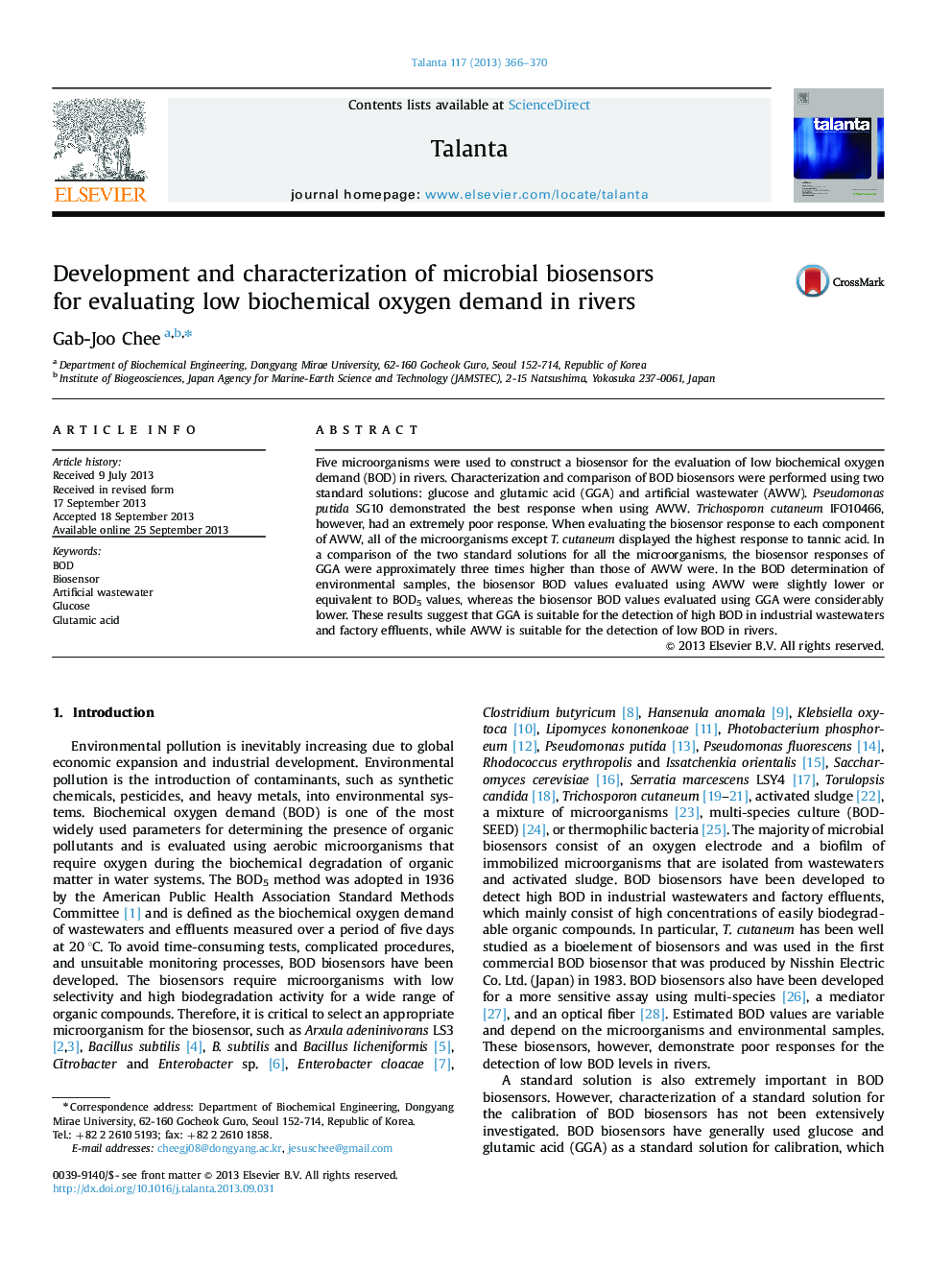| Article ID | Journal | Published Year | Pages | File Type |
|---|---|---|---|---|
| 7682110 | Talanta | 2013 | 5 Pages |
Abstract
Five microorganisms were used to construct a biosensor for the evaluation of low biochemical oxygen demand (BOD) in rivers. Characterization and comparison of BOD biosensors were performed using two standard solutions: glucose and glutamic acid (GGA) and artificial wastewater (AWW). Pseudomonas putida SG10 demonstrated the best response when using AWW. Trichosporon cutaneum IFO10466, however, had an extremely poor response. When evaluating the biosensor response to each component of AWW, all of the microorganisms except T. cutaneum displayed the highest response to tannic acid. In a comparison of the two standard solutions for all the microorganisms, the biosensor responses of GGA were approximately three times higher than those of AWW were. In the BOD determination of environmental samples, the biosensor BOD values evaluated using AWW were slightly lower or equivalent to BOD5 values, whereas the biosensor BOD values evaluated using GGA were considerably lower. These results suggest that GGA is suitable for the detection of high BOD in industrial wastewaters and factory effluents, while AWW is suitable for the detection of low BOD in rivers.
Related Topics
Physical Sciences and Engineering
Chemistry
Analytical Chemistry
Authors
Gab-Joo Chee,
